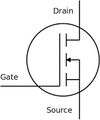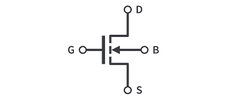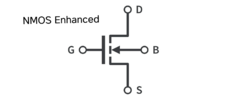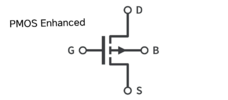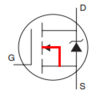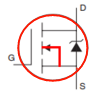Photomultiplier
- Nov 22, 2022
- 18
- Joined
- Nov 22, 2022
- Messages
- 18
Hello,
I must be making a very basic mistake, or the MOSFET must be broken. In either case, here's the schematic.
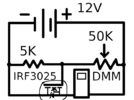
The purpose of this circuit is to test a heatsink's power dissipation capabilities. The IRF3025 is, of course, on top of the heatsink.
Every time I connect up the - battery terminal to the drain, which is the last I connect, I get what appears to be a dead short. I don't want to leave the circuit on long enough to see just how much current flows, because the wire tip lights up white hot with the spark.
I've tried turning the potentiometer down to 100ohms, up to 50Kohms, and I also tried just connecting the drain to the negative terminal, not the 5Kohm resistor. Nothing worked.
The MOSFET's resistance is 10.4Kohms source to drain and 3.4Mohms drain to source. I used one of those cheap TC-1 multi-function testers, and it says everything's fine with the MOSFET. I also used it to verify that the MOSFET really is connected up the way I think that it is.
What I want is for the MOSFET to act as a variable resistor.
Anyone know what's going on and how to solve it?
Thanks!
I must be making a very basic mistake, or the MOSFET must be broken. In either case, here's the schematic.

The purpose of this circuit is to test a heatsink's power dissipation capabilities. The IRF3025 is, of course, on top of the heatsink.
Every time I connect up the - battery terminal to the drain, which is the last I connect, I get what appears to be a dead short. I don't want to leave the circuit on long enough to see just how much current flows, because the wire tip lights up white hot with the spark.
I've tried turning the potentiometer down to 100ohms, up to 50Kohms, and I also tried just connecting the drain to the negative terminal, not the 5Kohm resistor. Nothing worked.
The MOSFET's resistance is 10.4Kohms source to drain and 3.4Mohms drain to source. I used one of those cheap TC-1 multi-function testers, and it says everything's fine with the MOSFET. I also used it to verify that the MOSFET really is connected up the way I think that it is.
What I want is for the MOSFET to act as a variable resistor.
Anyone know what's going on and how to solve it?
Thanks!


